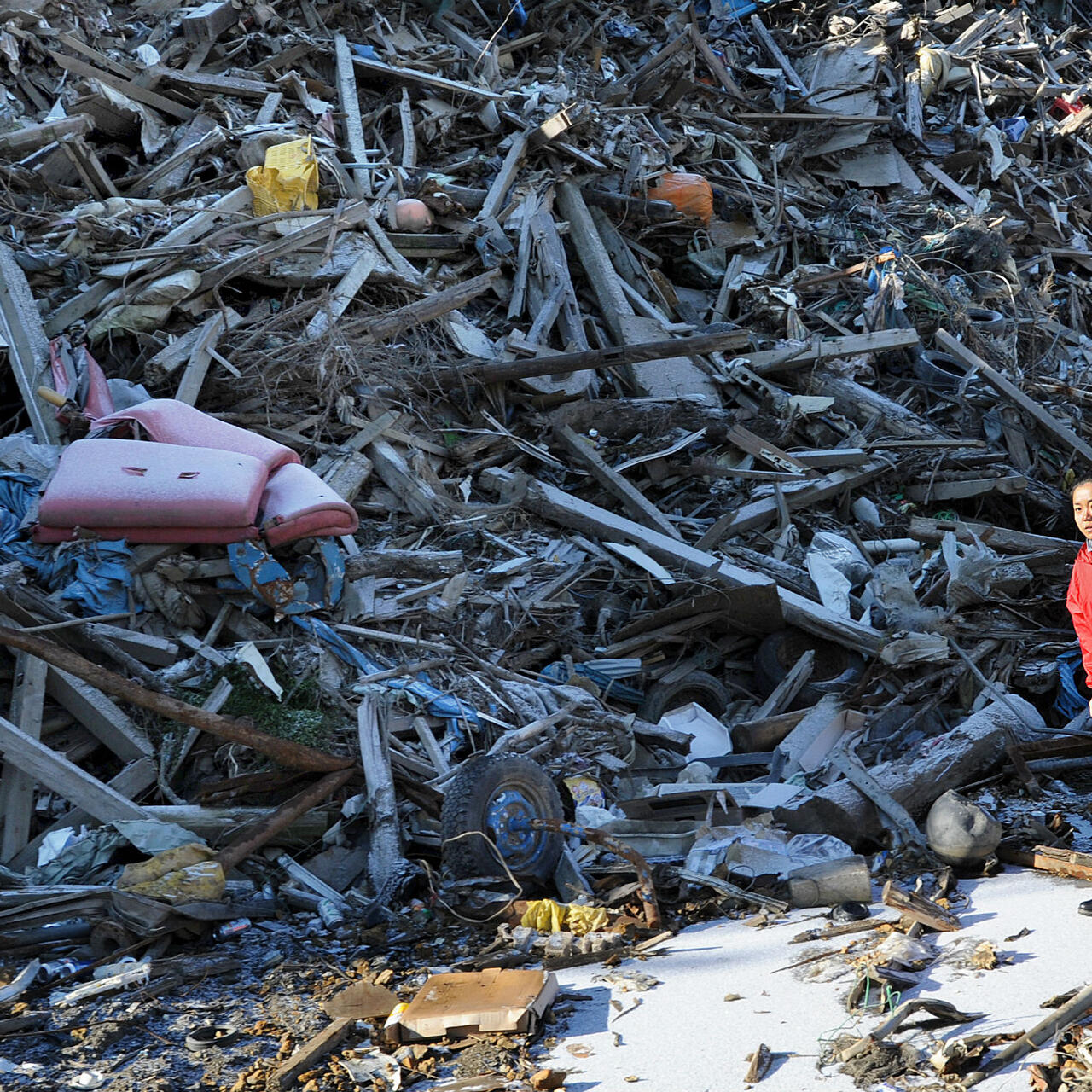
Tsunami in Japan
The International Rescue Committee helped Japanese aid groups provide lifesaving assistance to survivors of a massive earthquake and tsunami that struck northeastern Japan in 2011.

The International Rescue Committee helped Japanese aid groups provide lifesaving assistance to survivors of a massive earthquake and tsunami that struck northeastern Japan in 2011.
Shortly after a devastating earthquake and tsunami struck Japan on March 11, 2011, the International Rescue Committee responded by providing technical and financial support to three Japanese aid groups—the Association for Aid and Relief Japan (AAR), Japan Emergency NGO (JEN) and Peace Winds Japan.
The IRC helped the aid groups bring critical supplies to people living on remote islands, and focus their support on the elderly and the disabled. We also helped them to focus on rebuilding the ruined coastal fishing industry. The partnership continues.
Shinko Tana, then the IRC's Japan advisor, visited the disaster zone just weeks after the quake. Here are some of her impressions:
Prior to March 11, the Japanese city of Ishinomaki had a population of roughly 164,000. In an instant, some 3,000 people disappeared when a 30-foot-high tsunami washed over the city in the aftermath of the magnitude 9.0 Tohoku earthquake.
The tsunami flooded nearly half of Ishinomaki. Especially hard hit were neighborhoods that sit on the Oshika peninsula, the part of mainland Japan closest to the epicenter of the quake. The immense force shifted the peninsula slightly to the southeast and dropped it nearly four feet, putting much of it under water at high tide.
The only road that connected the peninsula’s residents to the rest of the mainland was largely destroyed in the disaster and covered in massive debris, leaving communities isolated. Both of the local food vendors were killed and no one has taken over their businesses. As many as one in three local farmers also lost their lives, and those who survived have lost customers, business partners and farm stands. People who live in the region haven’t had fresh fruit, vegetables or dairy products for months, and until these hard-hit communities begin to recover, most farmers will not be able to make a living
One of the IRC’s three Japanese aid partners, JEN, has been negotiating with nearby produce markets to supply Oshika peninsula, stressing the importance of a reliable food supply in rebuilding Ishinomaki.
Toshio Hirano, who leads JEN’s emergency response effort in Ishinomaki, took me to the Wataha neighborhood where JEN has established a community room where tsunami survivors come to drink tea, talk, and even get free haircuts. Outside the community room, volunteers from Mie prefecture have been cooking meals for people who are still living in their damaged homes, as well as for people who live in evacuation centers but return to their houses during the day to clean out sludge and debris.
One Wataha resident took me inside her damaged home to show me what remains after the tsunami. The marks left on the wall by the flood show that water reached a height of seven feet. This woman told me that she watched the tsunami approach from a window on the second floor. It was too late for her and her family to flee, but they were safe upstairs. She saw many others less fortunate swept away by the wave. Now she is cleaning up after the disaster, but she is unsure of about the future.
Thousands of volunteers came to Ishinomaki to help with sludge removal. Perhaps the city was built on unstable ground, or maybe the earthquake had shifted the strata, but for whatever reason, the stench and texture of the sludge in Ishinomaki is very different than that of Yamada, Rikuzentakata and other cities. In Oshika peninsula, the sludge is heavy, sticky and hard to brush off when dry. Volunteers and residents have an extremely difficult clean-up job.
While humanitarian organizations, volunteers and citizens have made significant progress in Ishinomaki, the city still faces many obstacles. JEN’s secretary general, Keiko Kiyama, told me she thought the organization would also be able to respond to the disaster in several cities. But the need in Ishinomaki is so great, she said, “We soon realized that this would not be happening any time soon.”
In most cities in the weeks after the tsunami, many families decided to move back into their damaged homes because conditions were better than in large evacuation centers that were forced to cope with hundreds of evacuees. Some moved home to protect their belongings from looters.
But in Ishinomaki, damage was especially extensive and seawater continues to flood some neighborhoods at high tide. “Ishinomaki has one of the lowest rates of people returning to their homes, simply because there is no other option for them,” says Kiyama. This is why it is important for organizations like JEN to continue providing shelter and daily meals for residents of the city. It is not only that they need the food—they are provided three meals a day in the evacuation centers—but they take comfort and have come to rely on a place to gather, to get the news and to help one another.
“By creating a place for people to gather, with a purpose, we are assisting the process of community recovery,” Kiyama told me. “The self-sufficiency of the people of Ishinomaki is our goal, and JEN will be here for as long as it takes.”